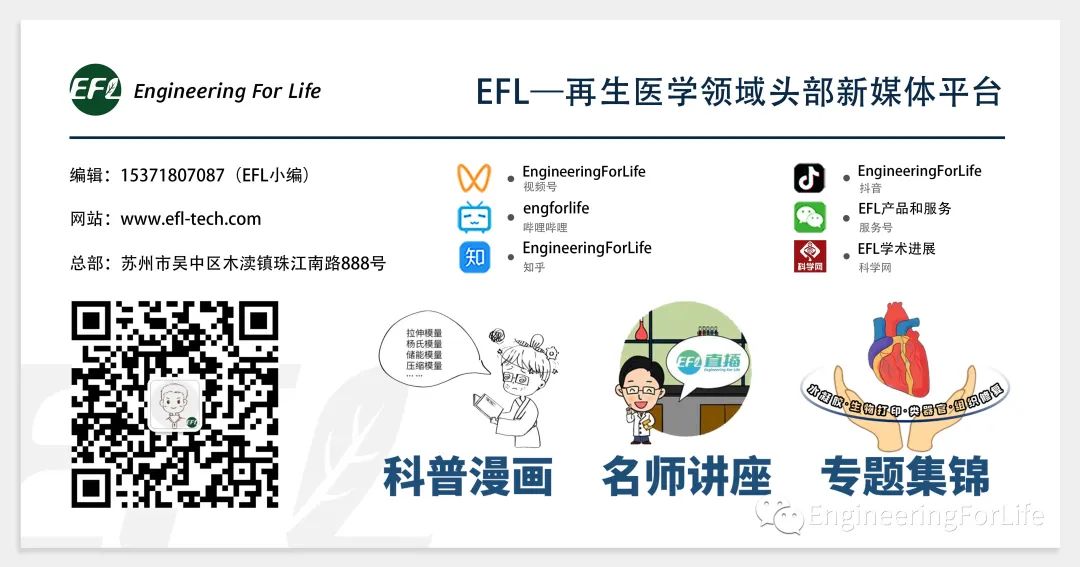Photodynamic therapy (PDT), as a non-invasive treatment for tumors, has garnered widespread attention. However, the hypoxia of solid tumors, the skin phototoxicity of “always-on” photosensitizers (PSs), and the abundant supply of glutathione (GSH) in cancer cells severely hinder the clinical application of PDT. To address this issue, the team from the First Affiliated Hospital of Wenzhou Medical University, led by Lin Jing, Li Zhiming, and Huang Peng, encapsulated a self-oxygenating nanoplatform (referred to as CZCH) with GSH-depleting capability into a hyaluronic acid microneedle patch (MN-CZCH) to simultaneously enhance the biosafety and therapeutic efficacy of PDT (Figure 1). The related paper “A Microneedle Patch with Self-Oxygenation and Glutathione Depletion for Repeatable Photodynamic Therapy” was published online on September 27, 2022, in the journal ACS Nano.
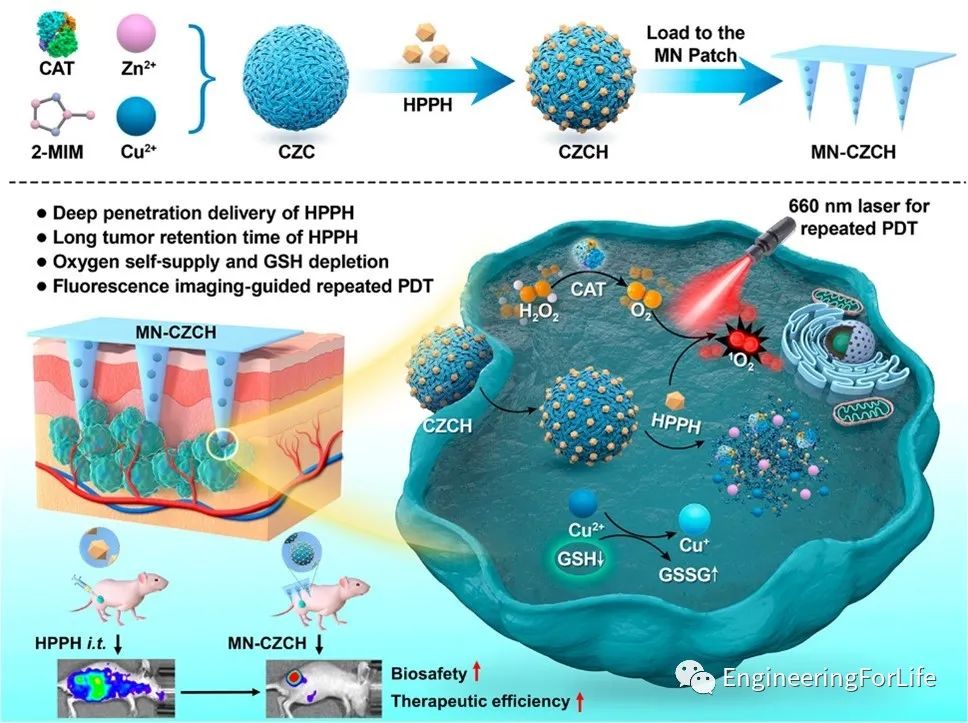
Figure 1 Preparation process of MN-CZCH patch and its schematic for repeatable PDT in melanoma.
1. Preparation and Characterization of CZCH
CZCH was prepared using a single-vessel method, exhibiting a geometric dodecahedron nanostructure (Figure 2a). Elemental mapping analysis of CZCH indicated the presence of C, N, O, Cu, Zn, and S elements (Figure 2b). After loading HPPH onto CZCH, the resulting CZCH particles displayed a spherical morphology (Figure 2c), with hydrodynamic size increasing to 165.3±2.9 nm (Figure 2d), and a change in surface ζ potential (Figure 2e), confirming the successful loading of HPPH. Furthermore, the results indicated that CZCH could generate abundant O2 under laser irradiation through CAT-catalyzed decomposition of H2O2 for self-supplied O2 (Figure 2).
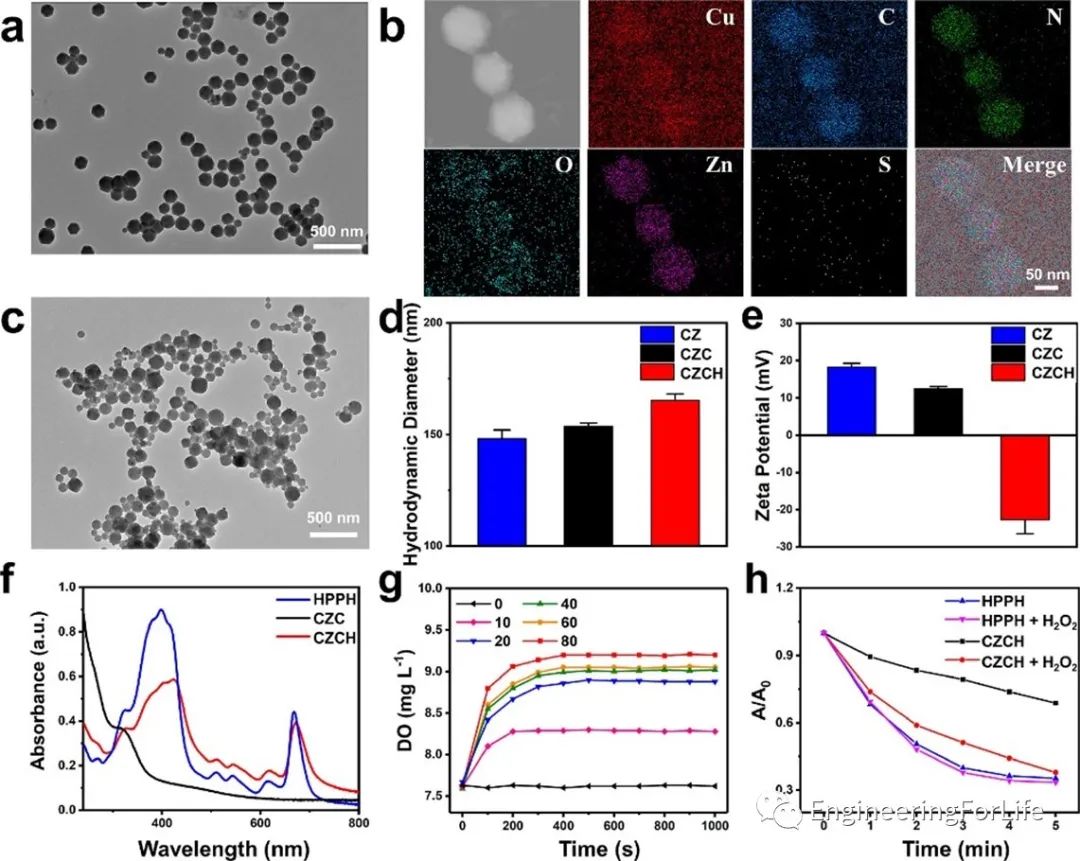
Figure 2 Preparation and characterization of CZCH.
2. Preparation and Characterization of MN-CZCH Patch
The MN-CZCH patch consists of a series of conical tips, as confirmed by SEM images (Figure 3a). The tips of the blank MN patch are light yellow (Figure 3b), attributed to the color of HA. Due to the presence of CZCH, the tips of the MN-CZCH patch appear dark green (Figure 3c). Additionally, the MN patch exhibits sufficient mechanical strength to penetrate the skin (Figure 3d). Skin penetration experiments demonstrated that the MN-CZCH patch could effectively pierce the skin, and its permeability was able to deliver the active payload to the specified depth (Figure 3).
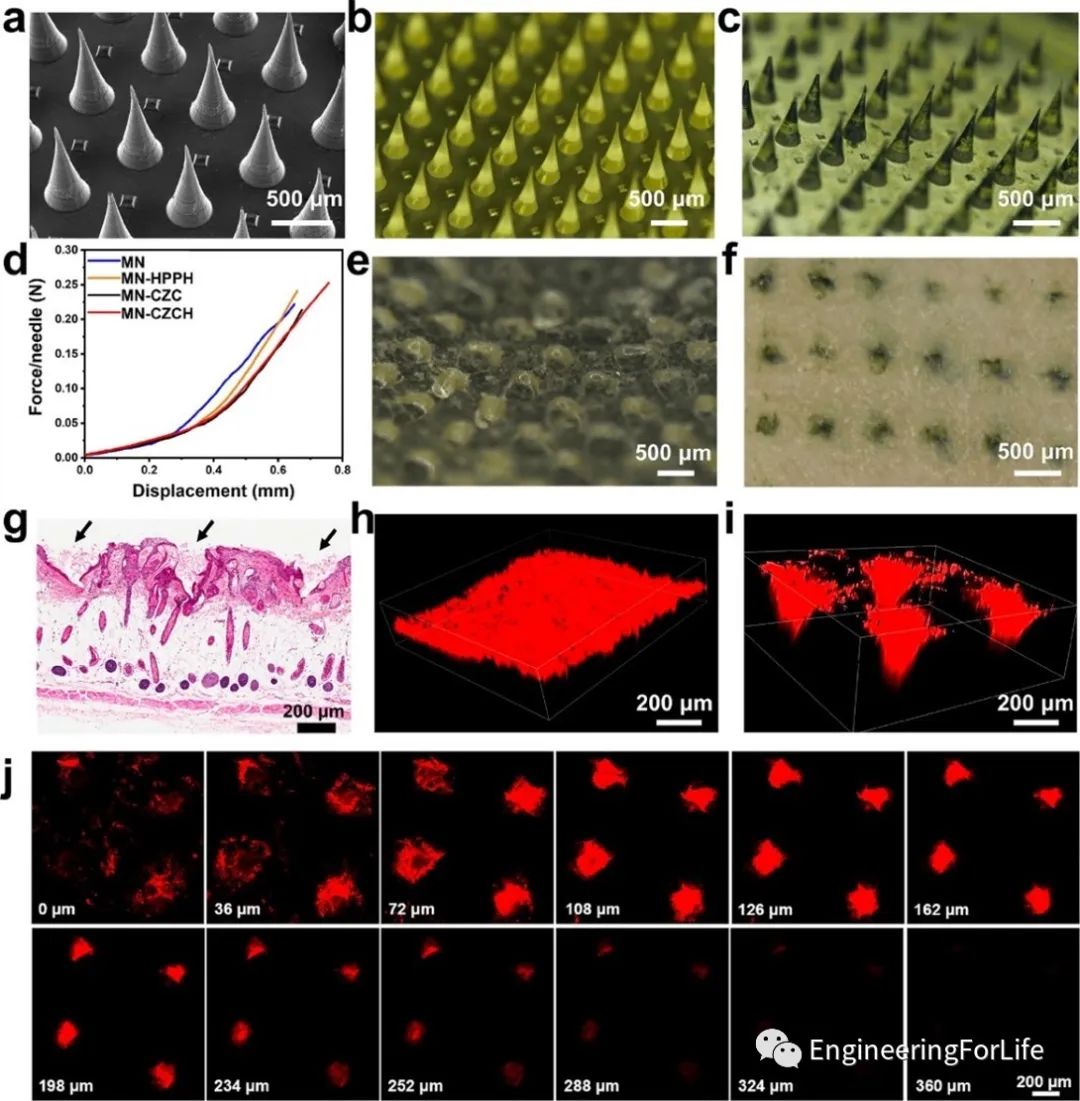
Figure 3 Preparation and characterization of MN-CZCH patch.
3. In Vitro PDT Effect
The cellular uptake of CZCH was verified by detecting the intracellular FL intensity of HPPH in A375 cells, showing that CZCH could be effectively engulfed by A375 cells (Figure 4a). The apoptosis levels of A375 cells under different treatments were estimated using membrane-associated protein V-FITC/propidium iodide (PI) staining. When co-cultured with HPPH, CZC, or CZCH for 12 h without laser irradiation, the apoptosis level of A375 cells was similar to the control group, with an apoptosis rate of less than 10%. However, after laser irradiation, the proportion of apoptotic cells in A375 cells treated with CZCH reached 80.82% (Figure 4b). Flow cytometry analysis indicated that the prepared nanoplatform exhibited good biocompatibility (Figure 4c). Notably, the depletion of intracellular GSH weakened the cells’ antioxidant capacity, thereby enhancing the killing efficiency of ROS based on PDT. This indicates that the PDT efficiency of CZCH was significantly improved through self-supplied O2 and Cu2+-mediated glutathione depletion (Figure 4).
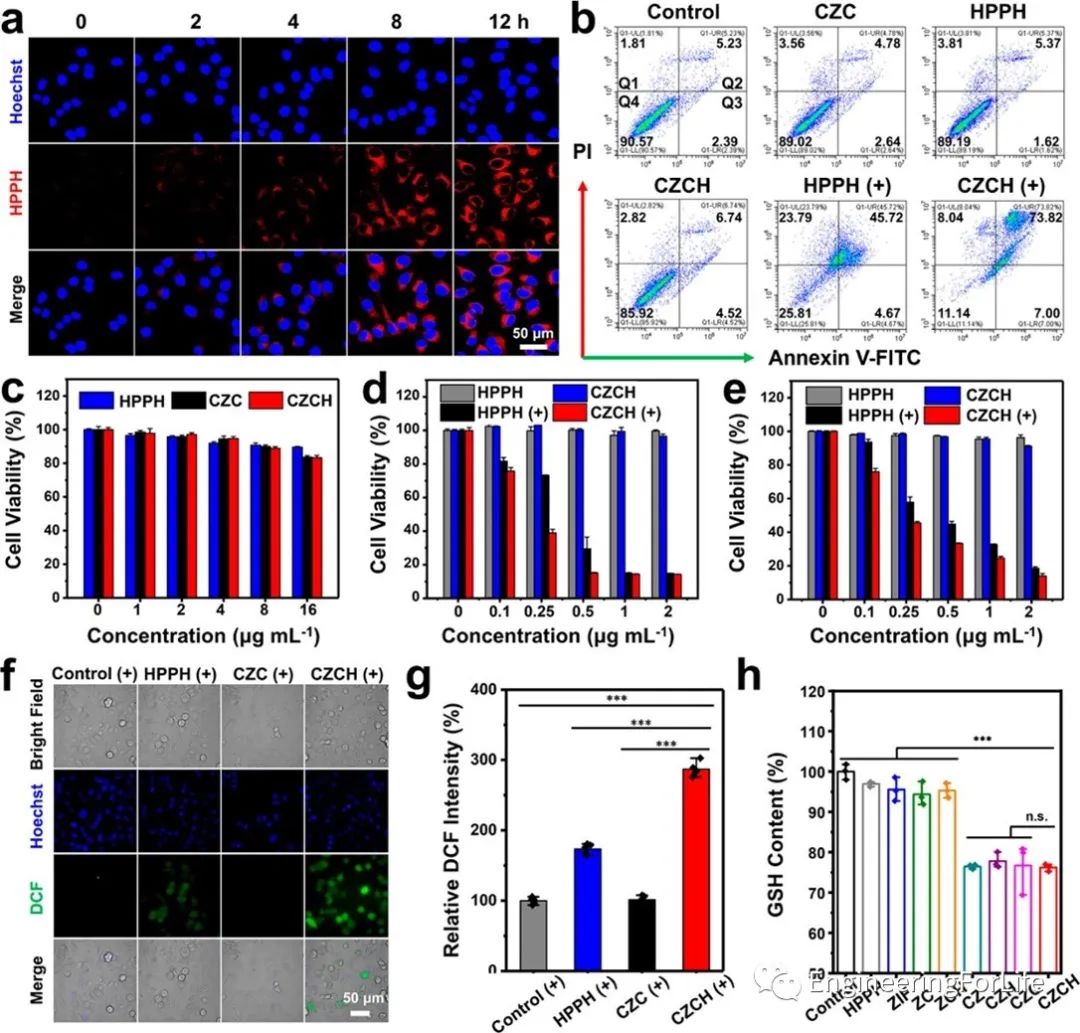
Figure 4 In vitro PDT effect.
4. In Vivo FL Imaging
To achieve FL imaging-guided PDT while minimizing side effects and maximizing therapeutic effects, such as avoiding the skin phototoxicity of “always-on” PSs, FL imaging was utilized to monitor the metabolic dynamics of HPPH and CZCH through different administration routes. Following different administration routes, the in vivo biodistribution of HPPH was studied in A375 tumor-bearing mice (Figure 5a–d). Simultaneously, the primary organs and tumor tissues were excised at 48 h for ex vivo FL imaging and quantitative analysis (Figure 5e-h). The results indicated that HPPH in the MN-CZCH group was primarily distributed at the tumor site, with minimal distribution in normal tissues and organs, granting HPPH a long tumor retention time, which is expected to yield better therapeutic effects and lower systemic toxicity for PDT.

Figure 5 In vivo FL imaging.
5. In Vivo Antitumor Effect of MN-CZCH Patch
Inspired by the in vitro antitumor efficacy induced by MN-CZCH patch and the prolonged tumor retention time of HPPH, the therapeutic effect of MN-CZCH patch on A375 tumor-bearing mice was further estimated. The tumor growth in the MN-CZCH (+) group was significantly suppressed or even eliminated after day 15, with H&E staining images showing severe nuclear shrinkage and increased spacing between cancer cells, while the tumor cell morphology in the control group and MN-treated mice showed almost no changes. The Ki67 staining images of the tumor in the MN-CZCH (+) group exhibited blue FL signals in most cell nuclei, indicating severe suppression of cell proliferation. The above results demonstrate that the transdermal delivery strategy based on MN and the sustained release of HPPH from CZCH can enhance the therapeutic efficiency of PDT (Figures 6-7).
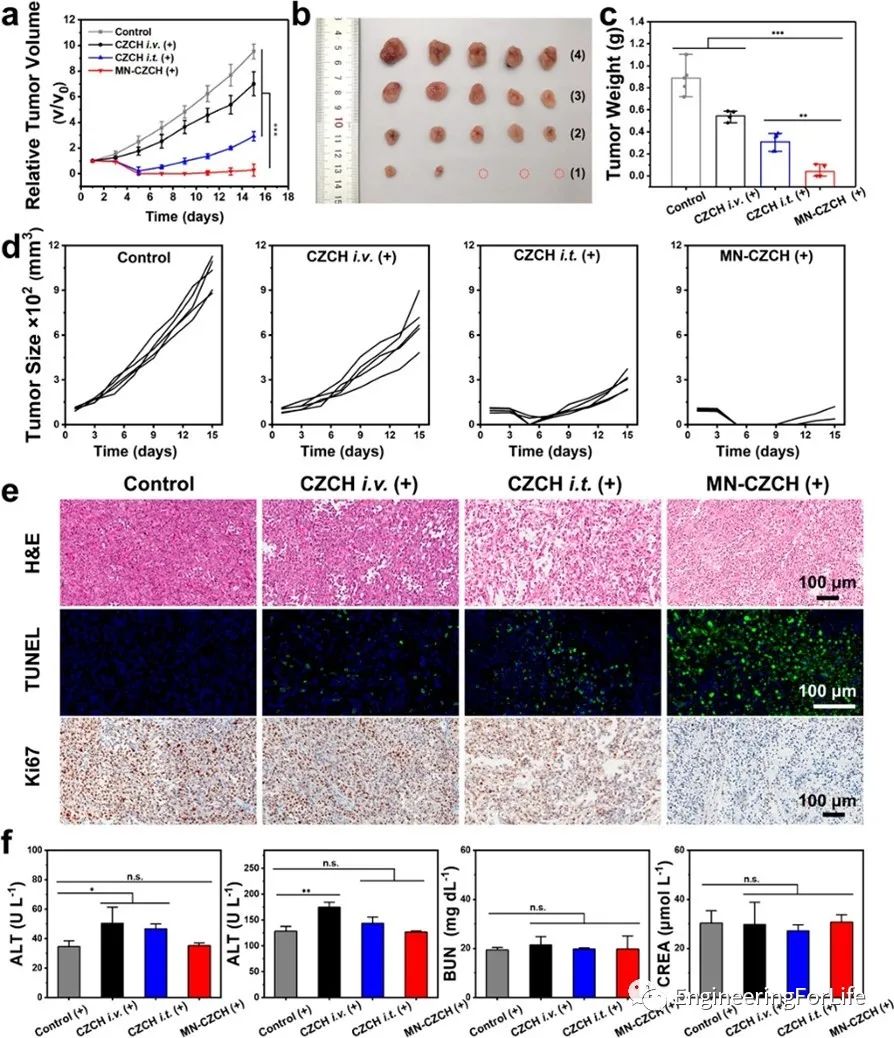
Figure 6 In vivo antitumor effect of MN-CZCH patch.
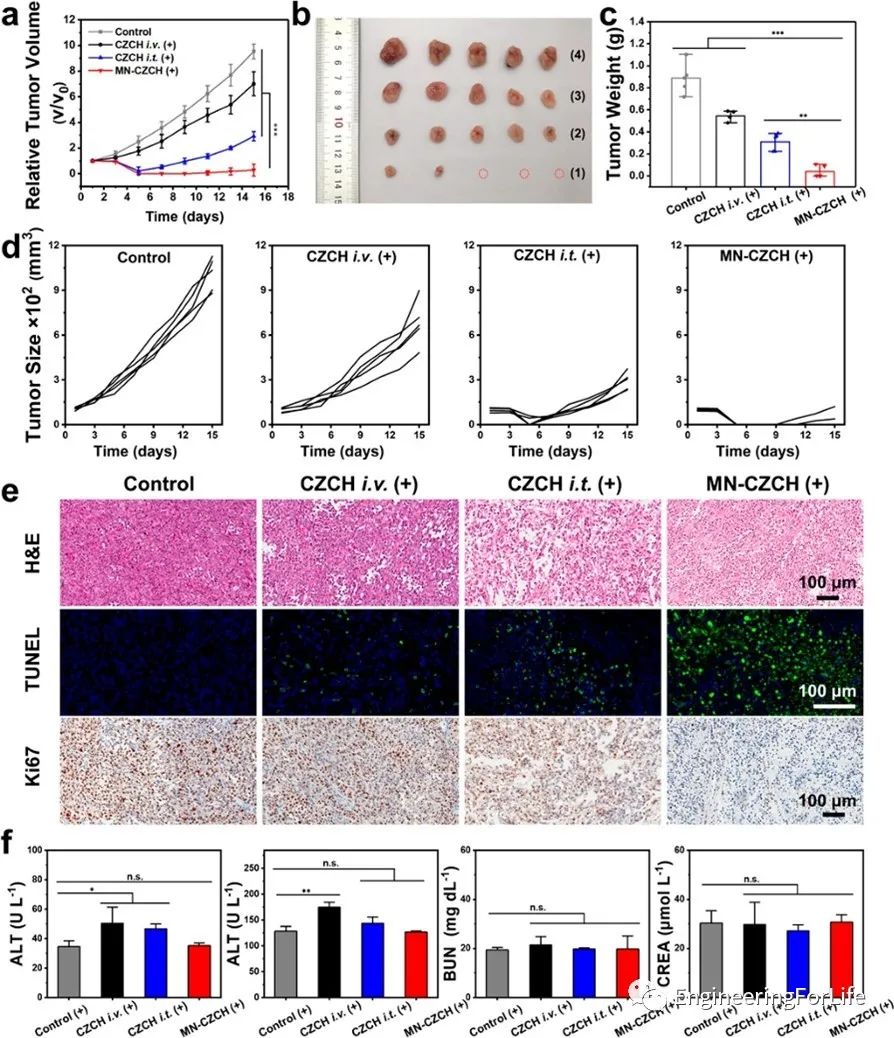
Figure 7 In vivo antitumor effects and biosafety of different delivery routes of CZCH.
In summary, this study successfully developed a microneedle patch (MN-CZCH) with self-oxygenation and GSH depletion for repeatable PDT based on HPPH. The prepared MN-CZCH can effectively overcome various biological barriers, delivering CZCH locally to cancer cells, and significantly enhancing the effect of PDT through the synergistic action of catalyzed oxygen by CAT. Both in vivo and in vitro results demonstrated excellent therapeutic effects, with a single local administration of the MN-CZCH patch significantly inhibiting tumor growth and even eliminating tumors. Therefore, the MN-CZCH patch has great potential for precise cancer therapy.
Source:
https://pubs.acs.org/doi/full/10.1021/acsnano.2c08098
Join Group Discussion
Regarding regenerative medicine, EFL has established “Academic Exchange Group” and “Industry Exchange Group“. Scan the QR code below to add the editor on WeChat for group discussions~
